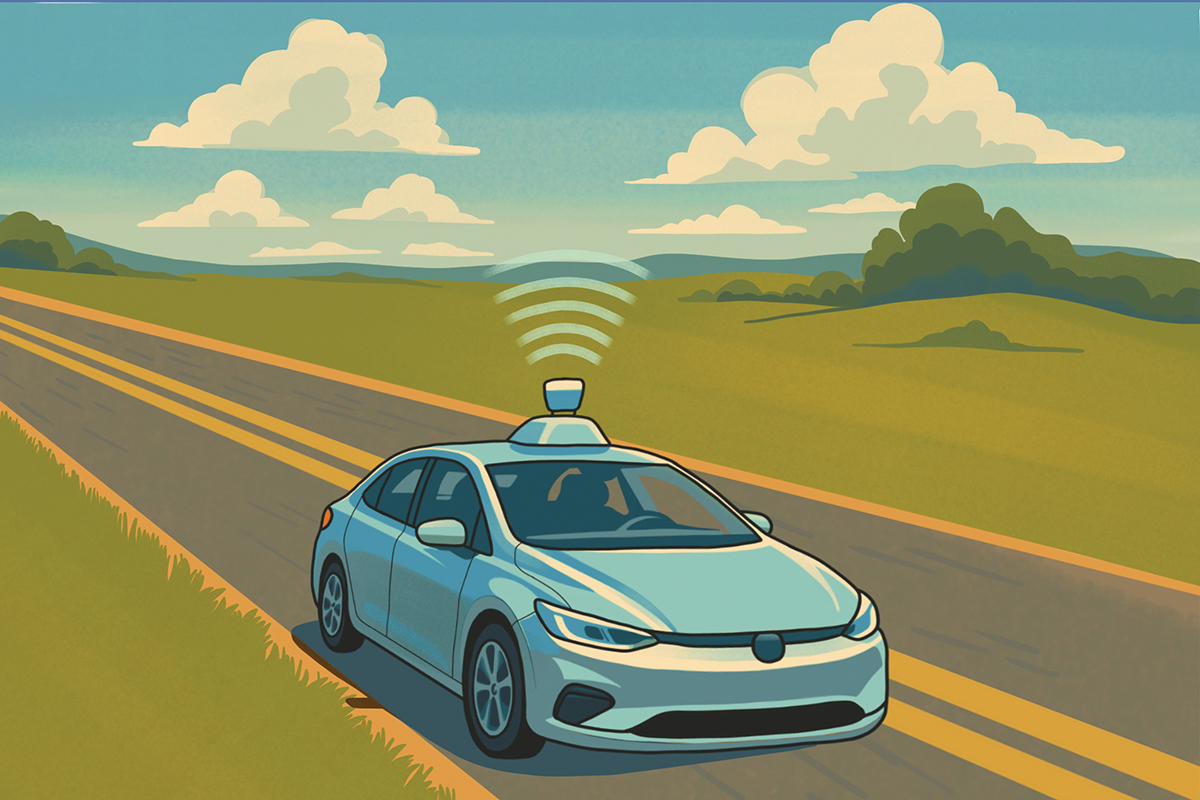New Uses for Self-Driving Vehicles
Cutting-edge UW research will address rural transportation needs.

The program has the potential to connect people in rural and Native communities with better health care, good jobs, food, and entertainment. Danielle Lawry
UW–Madison engineers are leading a first-of-its-kind research center devoted to advancing autonomous vehicles in rural and tribal communities. The Tribal and Rural Autonomous Vehicles for Efficiency, Livability, and Safety Center will use cutting-edge UW science to address real-world problems.
There are many barriers to transportation services in rural communities, including limited availability of public transit and workforce shortages. The UW researchers hope to develop solutions that could, for example, help people access health care or commute to work with autonomous buses or robotaxis.
“We can directly dispatch autonomous vehicles if we get a call from someone who has a need,” says Xiaopeng Li, a UW professor of civil and environmental engineering who is heading the initiative. “It could provide more frequent access to services across large geographic areas, connect people to job opportunities, and bolster access to necessities.”
Moving autonomous vehicles from cities, where they’re most frequently used, to rural communities comes with its own set of challenges. Andrea Bill MS’06 of the UW Traffic Operations and Safety Laboratory says rural roads can have different types of pavement marking and lane striping, or no striping at all. That means it will be important for autonomous vehicles to “see” and “understand” their surroundings well enough for safe navigation. They may also have to recognize vehicles like tractors or other farm machinery that rarely travel in cities.
The team will research a physical and digital infrastructure that uses low-cost sensors, drones, or even satellites to expand autonomous vehicle service in rural areas. Those technologies would work in conjunction with enhancements like improved road markings and signage upgrades.
Researchers will rely on input from many partners — especially rural and tribal communities — to understand how autonomous vehicles can suit their unique needs.
U.S. senator Tammy Baldwin JD’89, who advocated for the center, says it will “help make transportation more efficient, safer, and accessible for communities of all sizes. This program has the potential to help connect folks in rural and Native communities with better health care, good jobs, food, entertainment, and so much more.”
Published in the Summer 2025 issue



Comments
No comments posted yet.